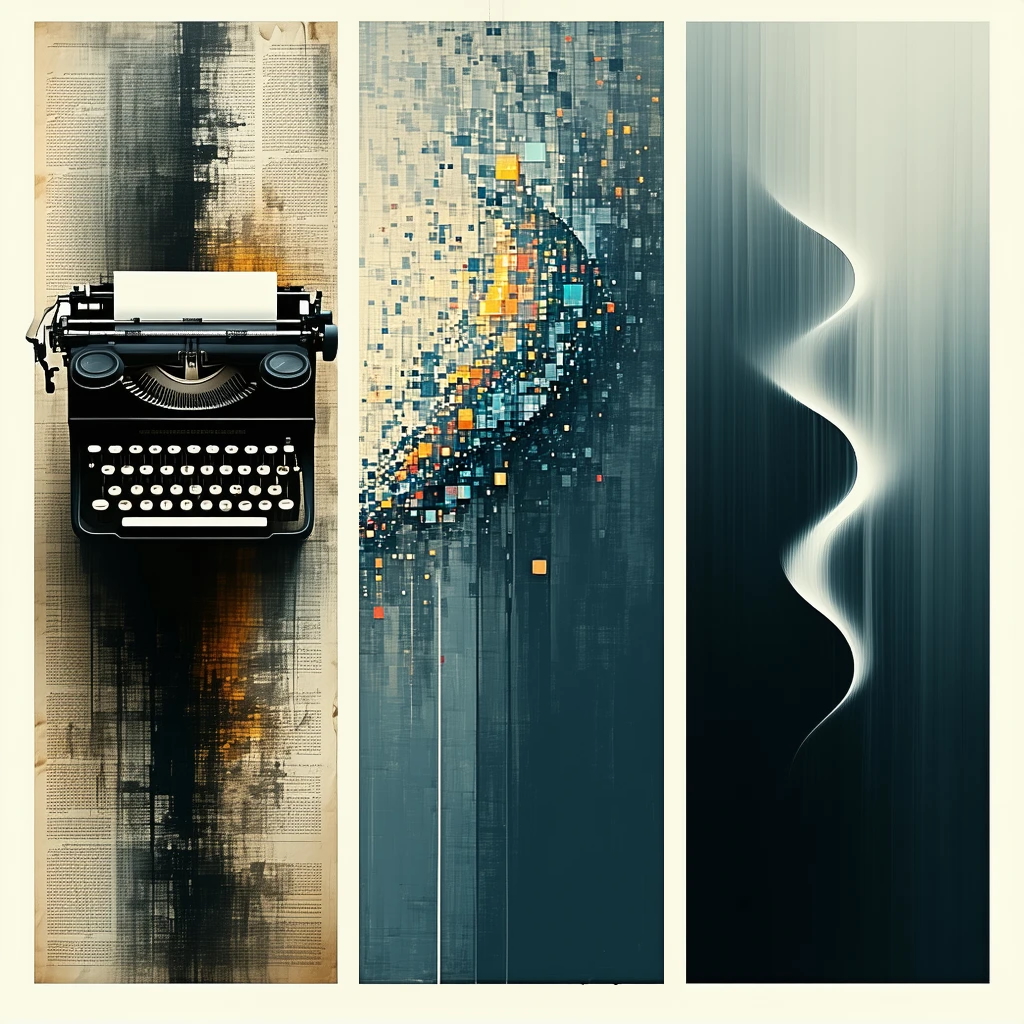There are countless reasons why, but here are the three most obvious—and most important.
Most people couldn’t write or create images. Now they can.
A few years ago, while working as an editor at a publishing house, I received a manuscript for a book we were planning to release. The topic was great—fresh, original, and about an important subject never addressed in my country. But the writing was awful and needed a huge amount of work. There wasn’t a single page where I didn’t have to correct mistakes or rewrite whole sentences, if not entire paragraphs or full pages. The book eventually came out and did fairly well in bookstores, with strong interest from the media.
Most publishers would probably say the same: many people with valuable ideas struggle to express them clearly.
And book writing isn’t the only case. Some of the most impressive entrepreneurs I’ve met—people who built entire empires—struggle to write a five-line email without multiple typos, misspellings, or grammar issues.
The truth is: most people can’t write. Not in a clear, structured, compelling way. We learn writing in school, and we’ve built digital tools that let anyone type, paste, or edit, but that doesn’t mean people can communicate effectively.
That’s what changed over the past three years.
We now have tools that can write for you—almost perfectly, almost instantly. That’s a major achievement, one that should be celebrated as a milestone in human history. It levels the playing field for anyone who has ideas but lacks the skill to express them. Why would we limit access to something that allows people to communicate more clearly, confidently, and easily?
Not only shouldn’t we limit AI use—we should encourage it. Just as we once encouraged people to use digital technologies and computers, we should embrace AI for the same reason: it’s empowering and liberating. And in the process, AI will raise the overall quality of written content.
It’s the same for images. Software like Photoshop or GIMP was never accessible to most. Even simplified apps required time and talent. Now, anyone can generate visual content that feels expressive and unique. The ability to create infinite images from text at the push of a button is a major step forward for personal expression.
This isn’t replacing creativity—it’s expanding who gets to take part in it.
All creation relies on tools—and AI is the most powerful tool we’ve ever built
Nothing humans do is done with bare hands alone. We build tools. We use tools. That’s what we do—always, for everything.
Creating content—text, images, music, video—is no different.
No musician could create music without the thousands of instruments invented over centuries. And in the past 20 years, no journalist could work without Google, a phone, a voice recorder, text processors, translators, and dozens of other apps and devices. These tools are simply part of the job. And now, AI is joining that toolbox.
Soon, no writer, designer, or content producer will work without some form of AI support. Not because they’re forced to—but because it’s the natural next step.
LLMs and generative AI are not just tools—they’re the ultimate tools. They can help in virtually any aspect of any form of content creation or creative process. They improve, streamline, and often reinvent how things are made. They’re even meta-tools, that can be used to build other, more specialized tools, fine-tuned for a specific task or content.
Thousands of creative platforms have already emerged, built on top of these models—tools for blogging, novel writing, video creation, ad generation, songwriting, and more. One site now lists around 35,000 such services—most of which didn’t exist just a couple of years ago. It’s not a wave. It’s a tsunami.
And existing tools—Word, Photoshop, and many others—are already integrating GPT-like features. AI is becoming the new operating system for creative work. If you produce content of any kind professionally, generative AI is the most significant shift you’ll witness in your career.
There’s no rational reason not to embrace it. As Gen-AI becomes increasingly ubiquitous, using it will soon become second nature for every form of content creation.
Gen-AI is part of a much longer story—and the next logical step
AI didn’t appear overnight. It’s the result of decades of research, rooted in visions that stretch back to Turing and the origins of computer science nearly a century ago.
Generative AI is just the visible tip of that evolution. And in many ways, it marks the third major shift in how humans produce content.
For centuries, content—text and images—was made by elites: scholars, artists, authors. Then came the digital Gutenberg moment: forums, blogs, YouTube, social media, smartphones. Suddenly, everyone had a voice. This was the “user-generated content” revolution (to which Emily Turrettini and I devoted our book Blog Story, 20 years ago). For the first time in history, billions of people could “have a voice” at the same level as professionally-produced content. Pretty much anyone on the planet could create their own media—sometimes with more reach than traditional outlets.
Gen-AI is the next revolution. Machines now help shape content—not to replace us, but to assist and amplify. To reduce friction. To accelerate and broaden expression.

Put simply:
* Before 2000: Elite-produced content
* 2000s–2010s: User-generated content
* 2020s: AI-assisted and AI-generated content
Again, this evolution is logical. It reflects the very idea of progress: the automation and streamlining of production in nearly every industry. There’s no reason content creation would be any different.
Just as we never went back from the Internet, we won’t go back from AI. This is not a fad. It’s not hype. It’s the result of 50 years of technical progress finally reaching everyday use.
The genie is out of the bottle—and it’s not going back in. Whether that’s good or bad is a different debate. But this train will not be stopped.
Written by Cyril Fievet. Polished and restyled by ChatGPT (v. 4o).
Illustration by Stable Diffusion (v. 3.5 through Replicate).